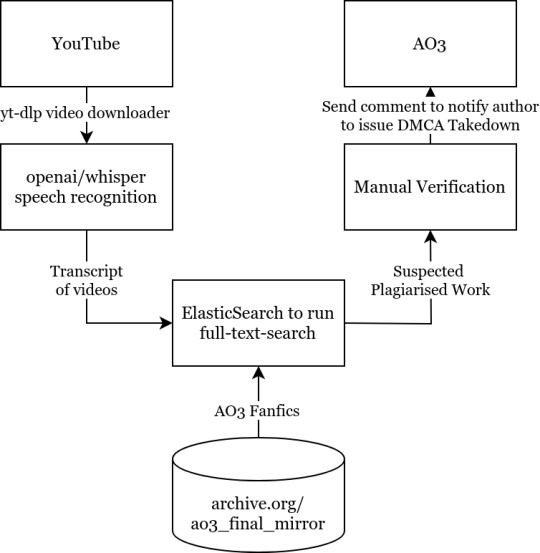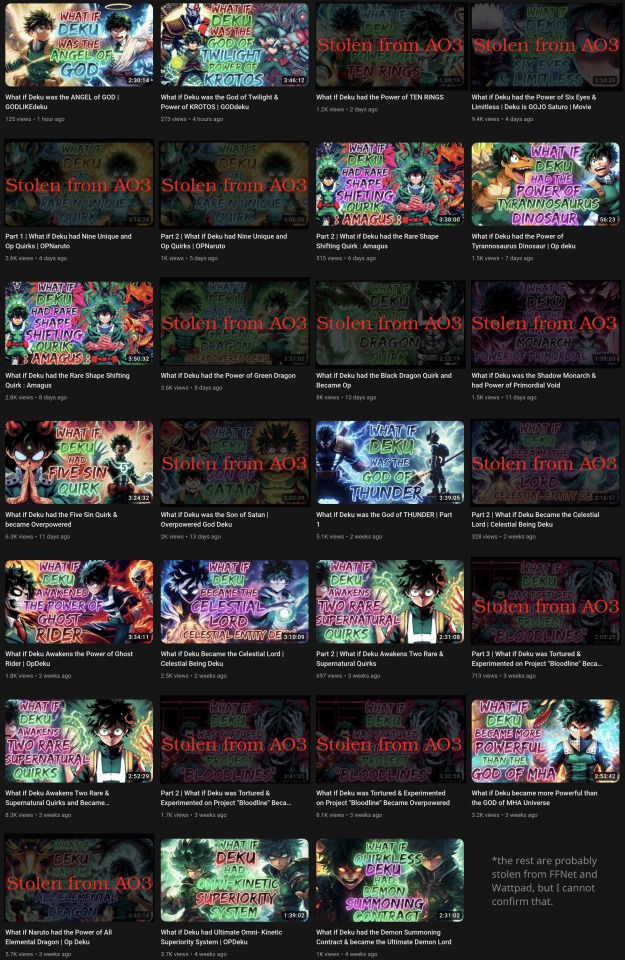#Manual to Automated Processes
Explore tagged Tumblr posts
Text
Digital Transformation in Facility Management: From Manual to Automated Processes
The process of managing and maintaining a company's physical assets and services, such as its buildings, machinery, utilities, security, cleaning, and catering, is known as facility management. The best performance, safety, and comfort of the facilities and their users depend on effective facility management.

However, a lot of facility management procedures are still done by hand and on paper, which can result in waste, mistakes, delays, and higher costs. The visibility and control of facility operations, as well as the capacity to adapt to shifting needs and demands, can all be hampered by manual processes.
The process of using digital technologies to develop new or modify already existing business processes, products, and services is known as "digital transformation."
Facility managers can benefit from digital transformation by automating and streamlining their processes, increasing their productivity and accuracy, and sharpening their decision-making skills. 31% of businesses have fully automated at least one function, according to a NetSuite article.
In this blog post, we will explore how digital transformation can transform facility management from manual to automated processes.
Assessing Current Facility Management Processes
Analyzing the current state of facility management processes and identifying the areas that require improvement is the first step in digital transformation. Gap analyses, a technique for comparing the present state with the ideal future state and identifying the gaps or discrepancies between them, can be used to accomplish this.
The following are a few examples of routine manual and paper-based facility management processes:
Work Order Management
Creating, assigning, tracking, and completing work orders for maintenance and repair tasks. Manual work order management can lead to miscommunication, duplication, loss of information, or delays.
Asset Tracking
Monitoring the location, condition, usage, and performance of physical assets. Manual asset tracking can lead to inaccurate data, missing or stolen assets, or poor asset utilization.
Maintenance Schedule
Planning and scheduling preventive and corrective maintenance activities for assets. Manual maintenance scheduling can lead to missed or overdue maintenance tasks, breakdowns, or unnecessary repairs.
Space Management
Managing the allocation and utilization of physical space within facilities. Manual space management can lead to underutilized or overcrowded spaces, inefficient space allocation, or poor space design.
Energy Management
Monitoring and optimizing the energy consumption and efficiency of facilities. Manual energy management can lead to high energy costs, wasteful energy usage, or environmental impacts.
Evaluating these processes enables facility managers to identify process bottlenecks, pain points, and opportunities for improvement. They can also prioritize the processes that impact their goals most, such as reducing costs, improving quality, or increasing customer satisfaction.
Implementing Computerized Maintenance Management Systems (CMMS)
Implementing a computerized maintenance management system (CMMS) is one of the best ways to automate and improve facility management procedures. A CMMS is a piece of software that aids facility managers in keeping track of their work orders, assets, and maintenance tasks.
The following advantages of a CMMS for facility management include:
CMMS can electronically manage work orders and track assets, eliminating paper forms and manual communication.
CMMS can streamline maintenance requests and prioritize tasks based on urgency, importance,
Utilizing Internet of Things (IoT) Technologies
Using Internet of Things (IoT) technologies is yet another method to automate and improve facility management procedures. IoT stands for the network of physical objects that are linked to the internet and are capable of contacting one another or a centralized system. Smart devices, cameras, actuators, and sensors are examples of IoT devices.
The following advantages of IoT technologies for facility management include:
Implementing Sensor Networks for Real-Time Monitoring: IoT sensors monitor facilities in real time for leaks, fires, mold, etc., helping managers detect and prevent issues.
Leveraging IoT Data for Predictive Maintenance and Energy Optimization: IoT data can help facility managers optimize maintenance, energy use, and efficiency. For example, it can predict asset needs and optimize energy use based on occupancy, weather, and time of day.
Application of IoT in facilities management is a must-read for anyone who wants to utilize the IoT properly.
Adopting Facility Management Software Solutions
Adopting facility management software solutions is an additional method to automate and improve facility management procedures. Software programs that assist facility managers in managing different facets of their facilities, such as space, energy, or security, are known as facility management software solutions.
The top benefits of facilities management software are numerous. Some of these are as follows:
Implementing Integrated Software for Space Management and Reservations: Facility management software can help facility managers manage space more effectively by creating floor plans, tracking occupancy, and enabling online reservations.
Utilizing Data Analytics and Reporting Tools for Decision-Making: Facility management software can help facility managers make better decisions by providing data analytics and reporting tools. It can generate reports on key performance indicators (KPIs), identify trends, and help managers take action based on the insights gained.
Implementing Mobile Applications for Facility Operations
Implementing mobile applications for facility operations is another way to automate and improve facility management processes. Software programs known as mobile applications are designed to run on portable electronic devices like smartphones and tablets. Facility managers can access and manage their facilities at any time, anywhere, with the aid of mobile applications.
Mobile applications can provide the following benefits for facility management:
Enabling Mobile Workforce and Remote Access to Information: Mobile apps can help facility managers enable a mobile workforce and access facility information from anywhere.
Improving Communication and Task Management Efficiency: Mobile apps can help facility managers communicate and manage tasks more efficiently with text, voice, video, and electronic tools.
Integrating Building Automation Systems
Building automation systems (BAS) can be integrated with other facility management systems to automate and optimize processes. BAS control and regulate mechanical, electrical, and plumbing (MEP) systems, such as heating, ventilation, air conditioning (HVAC), lighting, and security. This can help facility managers improve the comfort, safety, and efficiency of their facilities.
Building automation systems can provide the following benefits for facility management:
Implementing Centralized Control Systems for HVAC and Lighting
Building automation systems centralize HVAC and lighting control, helping facility managers optimize temperature, humidity, and lighting for occupants.
Automating Energy Management and Environmental Controls
Building automation systems automate energy management and environmental controls, such as turning off lights or adjusting HVAC settings, to save energy and money.
Ensuring Data Security and Privacy
Data security and privacy are one of the key challenges in the digital transformation of facility management. Facility management data can include sensitive information such as building plans, asset inventory, maintenance records, energy consumption, occupancy rates, and more. This data can be vulnerable to cyberattacks, data breaches, or unauthorized access if not properly protected.
To ensure data security and privacy, facility managers need to implement robust cybersecurity measures and access controls. These include:
Implementing Robust Cybersecurity Measures and Access Controls
Protect data with encryption, firewalls, antivirus software, and other tools.
Update software and hardware regularly.
Conduct regular audits and tests.
Create backup and recovery plans.
Complying with Data Protection Regulations and Standards
Follow data protection regulations and standards.
Obtain consent before collecting, processing, or sharing personal data.
Inform data subjects of their rights.
Minimize and retain data only as needed.
Training and Upskilling Facility Management Staff
One of the challenges of digital transformation in facility management is training and upskilling staff. Facility managers and their teams must adopt new digital tools and technologies, such as sensors, IoT devices, cloud computing, robotics, drones, augmented reality, virtual reality, and more, to keep up with digital transformation.
These tools and technologies can improve a variety of facility management functions, including monitoring, maintenance, inspection, reporting, analysis, optimization, and automation.
However, facility management staff must also acquire new abilities and skills in order to use these tools and technologies. For their staff to use these tools and technologies effectively and efficiently, facility managers must train and upskill them. They should encourage their staff to learn new things constantly and to be flexible. You can achieve this by:
Provide Training On Digital Tools And Technologies
Conduct regular training sessions
Online courses, webinars, tutorials, manuals, or other resources
Encourage staff to share knowledge and experience
Encourage continuous learning and adaptability
Create a learning environment
Reward staff for learning and performance improvements
Provide opportunities to learn new skills or take on new roles
Digital transformation can provide many benefits for facility managers, such as improved productivity, accuracy, decision-making, customer satisfaction, cost-efficiency, sustainability, safety, and compliance. However, digital transformation also poses some challenges, such as ensuring data security and privacy and training and upskilling facility management staff.
To overcome these challenges, facility managers need to implement robust cybersecurity measures and access controls, comply with data protection regulations and standards, provide training on digital tools and technologies, and encourage continuous learning and adaptability among their staff.
By harnessing the power of digital transformation for efficient facility management software, facility managers can achieve better outcomes for their facilities, their clients, and themselves.
0 notes
Photo






top line x supporting robo
DAL @ CGY (03.18.23) — after hitting the 40-goal mark and scoring the ot gwg in calgary following a small slump
SEA @ DAL (05.11.23) — during robo's 8-game post-season scoring drought, right before his 3-assist night against seattle
DAL @ VGK (05.27.23) — after robo's 5v5 break-out and 4 goals in 4 games in the vegas series
#jason robertson#joe pavelski#roope hintz#dallas stars#stars#*#niche gifset trying to articulate what i love about top line's communication style don't mind me#understated but highly reflective and discerning problem-oriented system that knows exactly when to push and support one another#even if so much of it /is/ Do The Right Thing or Make The Right Play that's not to say there aren't highly manual and emotionally-dependent#processes that influence their in-game automation#and it takes three people who are both aligned in the standards they hold themselves to on the top line and who know how to reliably#navigate and distribute that pressure amongst themselves#i'm normal..........#i do think roop being like yeah we talked about it i told him to chill out is legitimately romance though.
145 notes
·
View notes
Text
unfair when I think automating a process should be very easy but it turns out to be very not
#mine#I spent two precious hours trying to dynamically produce a pivot table#a task that takes six clicks to fully format manually#I gave up on the second half of the process#which was the part I was actually hoping to automate#fuck excel and fuck VBA
9 notes
·
View notes
Text
speeddraw test (sound on!)
song is good magicians by sidney gish
#its a little different using this one bc i had to screen record and manually edit the video. i think sketchbooks record feature autom#automatically cut out long pauses so its just every time it senses stuff being drawn. but the thing is it would only start recordng when#you press it. so if you want to record the whole thing you have to commit to pressing it at the start -_-#procreates is good too because it records the whole thing and then you have the option of having the recording when youre done#but it records the whole canvas so its hard to focus if you draw really tiny like me#myart#my art#my oc#oc#araminta#speeddraw#video#process work
55 notes
·
View notes
Text
STRESSED STRESSED STRESSED
#there are so many customers that owe us money#I’m sort of like#unofficially interning??? with accounting???#and I have to send out invoices today#and oh my gosh#what the literal heck#I’m so in over my head#and I shared ideas to automate some of the process for next time#but today I have to do it all manually#and I’m so stressed#my goodness#TIME IS RUNNING OUT#AND I HAVE TO GET IT ALL DONE TODAY AHHHHHHHHHHH
3 notes
·
View notes
Text
I need to pluck Trin and Vari out from my brain and get them helping me with this analysis :(
#stuff#it's 100% my own foolish fault#my move from excel to google sheets means that certain survey data analysis processes that I used to automate are now manual#aha. eyes hurty
2 notes
·
View notes
Text
you can support my creative endeavors via patreon and get this oil pastel as a sticker via patreon merch

bobomb valley, oil pastel 2024
#the system is automated and takes from my funds to process#but im happy to try to show appreciation for the support this way#even if its not in my ability to do manual merch at this time#higher tiers can get this oil pastel as a shirt
1K notes
·
View notes
Text
Unfolding the differences between manual and automated QA process
Quality Assurance (QA) testing is one of the foundation pillars in a software development lifecycle, determining the scope of a product. All businesses, from startups to leading MNCs, rely on strategic QA test modules to achieve higher customer satisfaction and growth expansion dynamics, regardless of the product domain. Today, two types of testing dominate the QA processes- Manual and Automation.
These two types are suggestive of their names- Manual, relying on human-driven planning and execution and automation testing, which involves scripts and technology to create and run tests. This blog reflects the fundamental differences between manual and automated QA, their purpose, usability, and critical pros and cons to the product development workflow.
1 note
·
View note
Text
I’m Declaring War Against “What If” Videos: Project Copy-Knight

What Are “What If” Videos?
These videos follow a common recipe: A narrator, given a fandom (usually anime ones like My Hero Academia and Naruto), explores an alternative timeline where something is different. Maybe the main character has extra powers, maybe a key plot point goes differently. They then go on and make up a whole new story, detailing the conflicts and romance between characters, much like an ordinary fanfic.
Except, they are fanfics. Actual fanfics, pulled off AO3, FFN and Wattpad, given a different title, with random thumbnail and background images added to them, narrated by computer text-to-speech synthesizers.
They are very easy to make: pick a fanfic, copy all the text into a text-to-speech generator, mix the resulting audio file with some generic art from the fandom as the background, give it a snappy title like “What if Deku had the Power of Ten Rings”, photoshop an attention-grabbing thumbnail, dump it onto YouTube and get thousands of views.
In fact, the process is so straightforward and requires so little effort, it’s pretty clear some of these channels have automated pipelines to pump these out en-masse. They don’t bother with asking the fic authors for permission. Sometimes they don’t even bother with putting the fic’s link in the description or crediting the author. These content-farms then monetise these videos, so they get a cut from YouTube’s ads.
In short, an industry has emerged from the systematic copyright theft of fanfiction, for profit.
Project Copy-Knight
Since the adversaries almost certainly have automated systems set up for this, the only realistic countermeasure is with another automated system. Identifying fanfics manually by listening to the videos and searching them up with tags is just too slow and impractical.
And so, I came up with a simple automated pipeline to identify the original authors of “What If” videos.

It would go download these videos, run speech recognition on it, search the text through a database full of AO3 fics, and identify which work it came from. After manual confirmation, the original authors will be notified that their works have been subject to copyright theft, and instructions provided on how to DMCA-strike the channel out of existence.
I built a prototype over the weekend, and it works surprisingly well:

On a randomly-selected YouTube channel (in this case Infinite Paradox Fanfic), the toolchain was able to identify the origin of half of the content. The raw output, after manual verification, turned out to be extremely accurate. The time taken to identify the source of a video was about 5 minutes, most of those were spent running Whisper, and the actual full-text-search query and Levenshtein analysis was less than 5 seconds.
The other videos probably came from fanfiction websites other than AO3, like fanfiction.net or Wattpad. As I do not have access to archives of those websites, I cannot identify the other ones, but they are almost certainly not original.
Armed with this fantastic proof-of-concept, I’m officially declaring war against “What If” videos. The mission statement of Project Copy-Knight will be the elimination of “What If” videos based on the theft of AO3 content on YouTube.
I Need Your Help
I am acutely aware that I cannot accomplish this on my own. There are many moving parts in this system that simply cannot be completely automated – like the selection of YouTube channels to feed into the toolchain, the manual verification step to prevent false-positives being sent to authors, the reaching-out to authors who have comments disabled, etc, etc.
So, if you are interested in helping to defend fanworks, or just want to have a chat or ask about the technical details of the toolchain, please consider joining my Discord server. I could really use your help.
------
See full blog article and acknowledgements here: https://echoekhi.com/2023/11/25/project-copy-knight/
7K notes
·
View notes
Text
#API Testing Services#Automation Testing Services#Binary Informatics#Manual Testing Services#Mobile App Testing Services#Offshore QA Expertise#on-demand testing services#Performance Testing Services#QA experts#QA offshore#QA processes#QA providers#QA services#quality assurance#Security Testing Services#software development process#Software Testing Company#Testing Approach
0 notes
Text
From Manual to Automated: How Labeling Machines Can Transform Your Labeling Process
Are you tired of the tedious and time-consuming process of manually labeling your products? Do you want a more efficient and cost-effective solution? Look no further than labeling machines. This powerful Machine can transform your labeling process from manual to automated, saving you time, money, and frustration. With advanced technology and customizable options, labeling machines can handle a…

View On WordPress
#automated labeling process#Benefits of using labeling machines#Common challenges when using labeling machines#Factors to consider when choosing a labeling machine#implementing labeling machines in your business#Maintenance and troubleshooting tips for labeling machines#Manual labeling process#Shrink Sleeve labeling machines#Sticker labeling machines#Types of labeling machines#Wet Glue labeling machines#labeling machine#product labeling#food labeling
0 notes
Text
#enterprise process discovery#automated opportunity discovery#manual process discovery#intelligent process discovery#rpa discovery#process discovery steps
0 notes
Text
i still havent gotten activated on status.cafe btw. i'm hoping i do like, soonish? I would like to add it to my site someday
#if someone has to manually verify me thats fine but like i wish they would be more clear about it#bc the signup process was automated and all#they don't tell you how long you might have to wait for the email that tells you you're activated or anything#if it was just like someone's webring or fanlisting i wouldn't be so impatient but it's like a service and they don't tell you any of this#like please just be transparent so i don't have to wonder...
1 note
·
View note
Link
0 notes
Text
So.
Re: tumblr bans of transfemmes.
Let's ignore PhotoMatt for a moment. Manbaby tech CEO doubling down on a stupid decision and making himself look like more of an ass doing so is not a new phenomena.
Tumblr has consistently said, in both public statements and leaked internal communication, that they're essentially running a skeleton crew.
They keep saying that they don't have the resources to moderate, manually review posts, have any kind of appeal process, or anything. So, as people have widely received communications about, they seemed to have automated a significant portion of the moderation to operate solely on the quantity of reports (probably with a basic filter, eg quantity of reports regarding a certain post, within a certain timeframe) to automatically ban or shadowban accounts.
And so, they wipe their hands, both to the users, the public, and their own consciousness, and go about their automated operations.
All of this is likely true. Tumblr, at this point, is essentially abandonware internally, a kind of weird vanity project/dumpster ground for server infrastructure for Automattic. Likely, they don't want the bad press of "shutting down" fully. Or maybe the trickle of revenue they get here just barely exceeds operating costs, so why not keep it around?
Whatever is the case, the bans are a result of an automated process working in the background. I'm giving them some benefit of the doubt here, of course, we can't know anything for certain- but it seems like the individual bans are not based on any specific, manual action.
And that doesn't fucking excuse anything.
Because at some point, multiple people sat down at tumblr, and decided how to cut costs.
And they decided that the bare minimum of report abuse prevention was one of the first things on the chopping block.
Before the boops. Before GUI reconfigures.
They decided to cut something that is necessary to manage online communities.
They decided to cut something that ensures any targeted group will have any kind of community online.
And then, after all of that, the only manual intervention is doubling down on the shitty decisions that the automated systems make, and plucking reasons out of their ass for why they were the right decisions all along.
It's pure silicon valley brain. Blame the computer often and always. Use it to shield the active decisions you made when designing the computer that way. Treat it as a fact of life as opposed to something they actively made decisions for.
Is tumblr staff hitting the banhammer on each transfemme one by one? No.
Is tumblr staff deliberately crafting a system that allows TERFs and other conservative bigots to get rid of the "undesirables" for them? Yup. But they sure as hell are trying to not say the quiet part out loud. If they can always point the finger somewhere else, to the advertisers, to the automated systems, to the TERFs, then they can always have juuusssttt enough plausible deniability.
But being the "queerest place on the internet" requires concious acknowledgement that queer people will be targets of harassment, and you will have to protect against that.
Side note, this is why I do try to keep my blog at least somewhat SFW. Its one of the main reasons why I choose not to reblog all of the posts I'm tagged in- if the post is overtly NSFW, I've probably seen it, appreciated it, and consciously decided my level of interaction with it mostly based on how "tumblr friendly" it is. Is that bowing down to them? A little. It's also my choice. I value the community I have here. The pushes that y'all have given me gave me the strength to transition, and honestly gives me a lot of motivation to research HRT biology as much as I can, among many other things.
Yeah, I post pictures that are clearly meant to be found attractive in ways that are generally not socially acceptable , but never actual NSFW. I would like to think that I'm pretty safe from bans, but hey. Who knows. I don't want to lose my follower base, and the community around it.
And yeah, I'm gonna annoyingly remind you of the other places to find me, make sure to check my pin. If you don't know where to go, just find me on reddit and go from there, I'll post about it if anything happens.
#I hope this rant is at least somewhat intelligible#im in lab late night and typing this out as fast as i can in between experiment steps#stay safe out there yall
1K notes
·
View notes
Text
Crafting automation???
Nether-based gold farms are much more usable now because the gold nuggets could be converted into ingots or blocks possibly instead of having to do so manually
guardian farms directly making prismarine
Mega builds are significantly easier because e.g. if you want to build something that takes 3 shulks of deepslate tiles you don't have to go through the crafting recipe for EVERY stack of deepslate several times to get to tiles.
Configuring tnt duper cobble generators to make stone bricks, chiseled stone, mossy cobblestone, is now possible
Automated conversion of copper ingots to copper blocks is honestly a game changer because copper is so time consuming to work with.
Iron can be crafted into buckets which means you could theoretically hook up an iron farm to a farm that uses buckets to collect stuff and fully automate the whole thing...
AUTOMATED FOOD PRODUCTION?
automated bamboo farm that automatically converts the bamboo to blocks
AUTOMATED DYE FARM. AUTOMATED DYEING MACHINE
you could have multiple stacked tiers of farms that take the raw materials through a whole process to get to the end point.
okay i'm actually really excited about this
1K notes
·
View notes